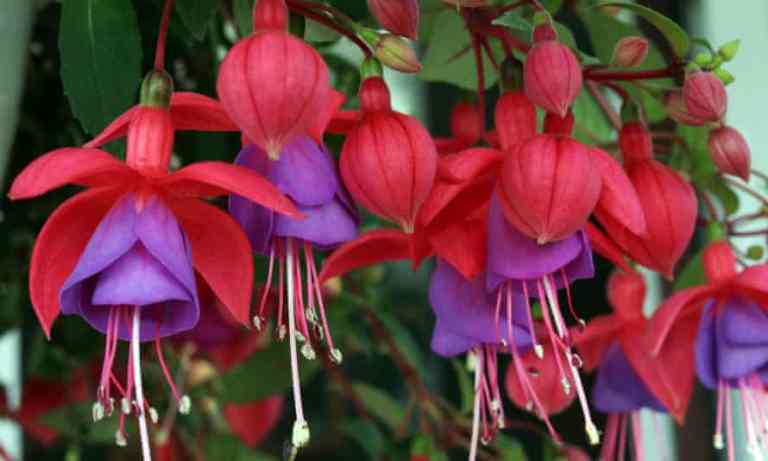
While these plants are also suited to brighter locations, I find they look far better in less sunny spots as their branches arch out more elegantly and their leaves get larger and greener to access more light. COURTESY
Perhaps what I love most about gardening is the sense of hopefulness it instills for the future, and for me there is no time of year when this is more the case than right now, when bedding plant catalogues hit the doormat. With their promise of a season of summer colour and life, their arrival can feel like a godsend after the monochrome months of winter. While the vast majority of these species need the luxury of full sun to thrive, if you know where to look there are some amazing contenders for shady spots where few others will be happy. Here’s why I think these often-overlooked miracles of nature deserve a revival.
Summer bedding plants are species that hail from the tropics and subtropics where, given near-permanent summer, they produce a constant conveyor belt of flowers instead of a short burst in a narrow, seasonally dictated window of just a few weeks. OK, they will be killed off come the first hard frosts of winter, but until then they more than make up for the need for annual replanting with the sheer length of season of interest they provide. This is particularly relevant in shady spots, as other flowering species suited to these locations tend to have even shorter windows because of their woodland origin, confined to the spring and early summer before the trees come into leaf. Also, the trickiest thing about bedding plants is usually the watering, as the sunny spots demanded by many species can also mean the slavish devotion of daily watering for hanging baskets and window boxes. Growing bedding in cooler, shadier locations can be a far lower maintenance option.
There are three main groups of species to look out for that will positively shine out in even quite deep shade: begonias, impatiens and fuchsias, which are all rainforest understory natives that have an in-built tolerance for low light levels. There are literally hundreds of species and cultivars to pick from within these.
While these plants are also suited to brighter locations, I find they look far better in less sunny spots as their branches arch out more elegantly and their leaves get larger and greener to access more light. They also produce slightly fewer flowers, creating a more balanced ratio of leaves to blooms, which looks far more natural, especially for the more highly bred cultivars which, in full sun, can have a touch of the Barbara Cartland about them.
I think part of the reason bedding plants have declined in popularity is precisely this kind of breeding that selects plants for the maximum number of petals, impossibly large flowers and most garish colours, which means when used en masse they can be a bit much. However, simply separating these out a little, dotting them between a permanent structure of leafy greens to add flashes of colour and interest, will instantly create a more “wild woodland” rather than “crocheted tea cosy” look.
I promise you, plant up a container of fuchsias in the dull spot under a tree or near a blank wall, and you will thank me come the summer.






0 Comments